SUMMARY
This is AI generated summarization, which may have errors. For context, always refer to the full article.
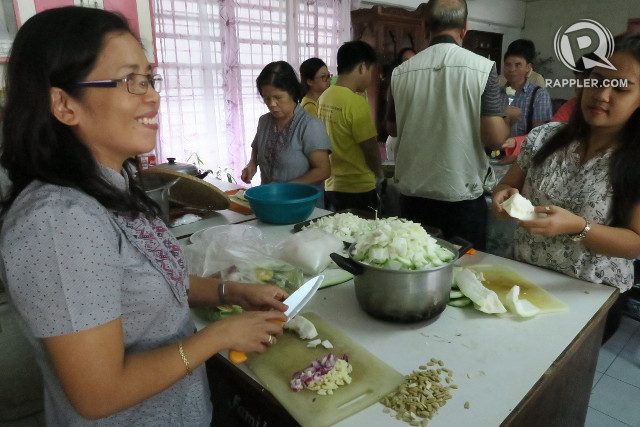
CAVITE, Philippines – In a school cafeteria in General Mariano Alvarez town, Cavite, I pop a “veggie ball” in my mouth and wait for the inevitable throat-cringe of disgust.
I am a sworn veggie hater, to the disappointment of my mother and my salad-loving friends.
But the disgust does not come. Instead, I grab another veggie ball from a table of other vegetable dishes and munch it down with relish.
The veritable veggie fest laid out in front of me was lovingly prepared by the school teachers of San Gabriel II Elementary School for their students.
Still busy chopping cucumbers and separating malunggay leaves from stems, the teachers are slowly but surely converting veggie haters to veggie fans.
And as my tastebuds can attest, they may yet succeed.
Their menu of dishes is not exactly the kind of junk food most kids would beg their parents for at the take-out counter.
But what truly amazed me was how strange-sounding the vegetables were. For someone more used to “common” vegetables like lettuce, cabbage, carrot, onions, and lentils, they sounded alien yet familiar, as if the ghost of Filipino language classes was haunting me.
Muskadsilog, Ginataang Sigarilyas at Kalabasa, Maca-Kulitis Soup, Spaghetti with Malunggabi, Ginataang Kadyos, Kamote Buchi Surprise, Kadpilan Arroz Caldo Con, read the menu.
Today, the teachers are serving ginataang upo with malunggay to the 141 students who will soon come streaming into the “feeding room,” Home Economics teacher Maria Eloisa Bersamin told me.
For dessert, they’ll be having pichi-pichi made from cassava and suman made from cassava.
If the vegetables in some of these meals sound unfamiliar to you, it’s because they have become rare elements of the modern-day Philippine diet, especially in cities.
But native crops like kulitis, pandan, tanlad, tapilan, sulasi, alukbati, and katuway are making a comeback in Cavite schools like San Gabriel II Elementary School.
The secret is at the end of a short walk to the other side of the campus.
Return of the native
I walk under a sign that welcomes me to the school’s “Crop Museum.” I find myself in an 800 square-meter plot of land of organized green chaos which school officials say is home to 100 types of crops.
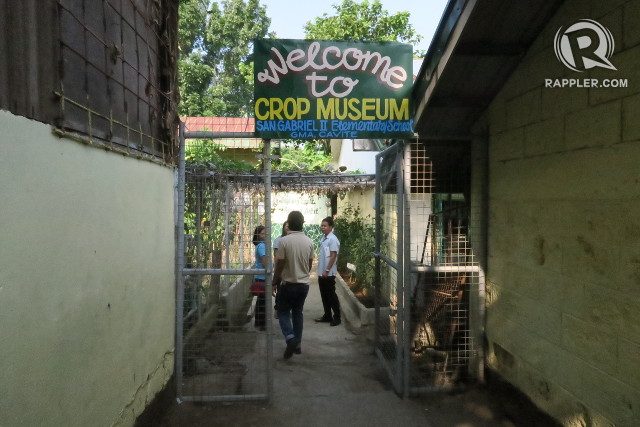
The feeding room’s bounty of native vegetables comes from this small area, where every one of its plots might contain up to 4 varieties of vegetables.
“Even though it’s a small area, you can plant different plants. Here, I planted kulitis, pandan, tanlad, tapilan, pechay, mustasa, radish, cassava, different kinds of kamote, different kinds of gabi,” said garden teacher Julie Rivera, pointing at two plots.
A giant gourd covered with a chalk-white powder sits in one corner of the garden. It is a kundol or native ash gourd and, until recently, was one of the rarest native crops in the country, said International Institute of Rural Reconstruction (IIRR) Senior Program Advisor Dr Julian Gonsalves.
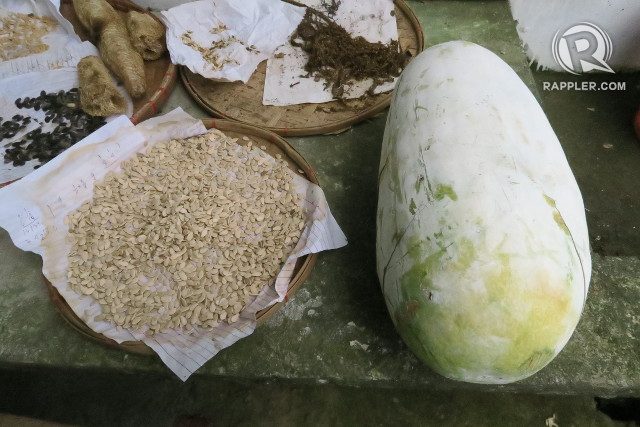
Kundol used to be part of daily life in the Bicol region. In days of yore, its vines were commonly found wrapped around nipa hut roofs. But because of the advent of concrete houses, kundol began to disappear. The metal roofs of these modern homes were too smooth for the kundol vines to wrap around. The roofs would also get too hot from the sun for the plant to survive.
But several kundol in the Crop Museum were alive and thriving. Rather than simply hearing about it from their elders, the students of the school could see one for themselves, and even eat it for lunch.
It is just one of many indigenous vegetables and fruits returning to the consciousness of students, in a time when most can sing the “Bahay Kubo” folk song’s list of vegetables but not necessarily know how these vegetables taste.
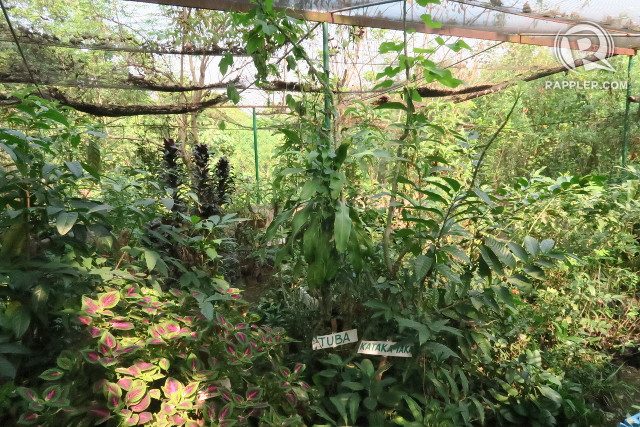
The Crop Museum was an initiative of school principal Ernesto Esguerra, with support from the Department of Education’s Gulayan sa Paaralan (Vegetables in Schools) program. IIRR, DepEd’s partner for the program, helped provide start-up seeds and trained the school teachers on how to grow and maintain the garden.
The project has taken root in 27 pilot schools and has been promoted to 300 schools in Cavite.
Science behind the garden
Two crucial elements sustain the program: a concept called biointensive gardening and a seed exchange program.
Gonsalves, who helped teach biointensive gardening to school gardeners, explained that it is a way of gardening that promotes crop diversity even in small plots of land and with less inputs.
“It is designed for schools. It has a nutrition agenda,” he said.
Here, trees like madre de cacao are allowed to grow in between other crops. The trees provide shade, thereby regulating sunlight and heat. The “micro-climate” created by the trees protects crops from sudden heating and cooling, helping them thrive. It also helps keep the soil from drying up too fast. Soil moisture is critical to many types of crops.
Another element of biointensive gardening is “deep-dug beds.” This requires planting seeds or seedlings 30 centimeters deep into the ground. Such depth helps retain seed-nourishing water for longer.
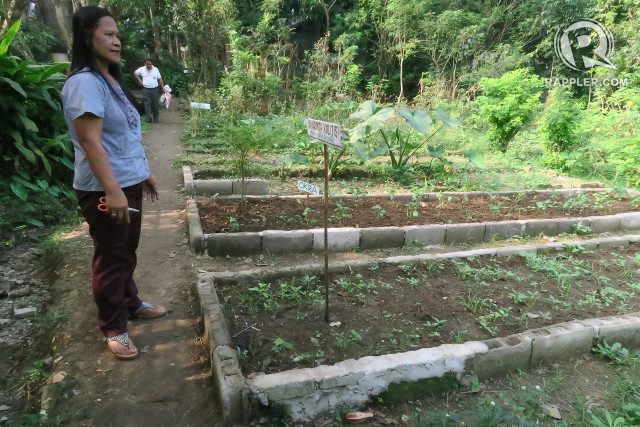
“The water infiltrates deep down into the soil instead of running off. So if there’s a drought, it dries last,” said Gonsalves.
Because of this, the crops only have to be watered once a week, saving water and labor.
Biointensive gardening also has a preference for native crops because they are better at adapting to local conditions compared to non-native crops. This is particularly important for a country regularly battered by typhoons and now at the mercy of the El Niño phenomenon.
For instance, bataw, a native hyacinth bean, has been found to be tolerant to both drought and floods, said Gonsalves.
Biointensive gardening is just the type of low-tech strategies agricultural experts all over the world are promoting to preserve food security despite climate change and the booming human population.
By allowing a huge number of crop varieties to grow in small parcels of land, biointensive gardening promotes nutritional diversity. In schools, this means healthier students. (READ: State of PH nutrition: The last 5 years)
Gonsalves said this isn’t new. Even before agriculture became a science, ancient farmers were already planting madre de cacao (or kakwate) in between cacao in order to satisfy the latter plant’s need for shade and cool temperature.
In fact, this life-giving role is where madre de cacao or “mother of cacao” derives its name.
Barter for beans
Garden teacher Julie Rivera gestures proudly at a shelf full of glass jars in a small patio beside the Crop Museum.
The jars all hold tiny gems – different seeds of indigenous crops. Their labels proclaim themselves to be bush sitao, paayap, sigarillas, kadyos, kinchay, saluyot, and more.
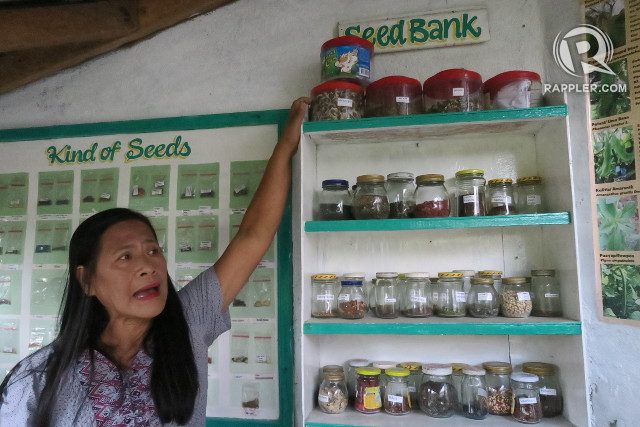
At least twice a year, Rivera and other school teachers will bring these jars to a Seed Exchange where other Cavite schools and towns will bring their own native treasures.
Cash will not change hands. The exchange is based on a barter system in which I get the seed I need by giving you the seed you need for your garden.
In this way, once-disappearing native seeds find their way to other green thumbs so they may be grown in more and more gardens.
In a few years, Gonsalves expects a Renaissance of indigenous vegetables and fruits.
Already, school teachers are finding other ways to promote native crops. They’ve developed kundol tea (selling for P150 per glass) and kundol candy.
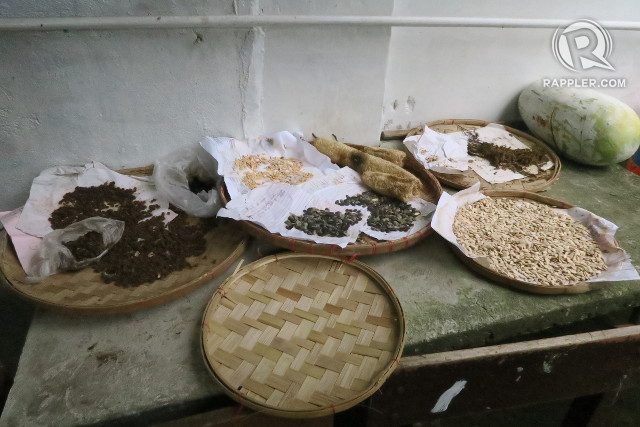
It may only be a matter of time before native crops regain their dominance in the diets of Filipinos.
But present and future Crop Museums are threatened by the reality of expanding school buildings, said Principal Ernesto Esguerra.
In fact, in a nearby school, San Gabriel I Elementary School, 25 hectares of garden had to be sacrificed to give way to a brand new school building, he said.
Schools and education authorities may have to weigh the benefits of infrastucture against these gardens or find different ways of doing both, for example, through vertical gardens.
But back in the feeding room, relishing my plate of cassava pichi-pichi, words painted on a wall overlooking rows of dining tables proclaimed a basic fact of life.
“Mga sariwang prutas at gulay pampalakas ng katawan, pampahaba ng buhay, gabay sa kinabukasan.”
(Fresh fruits and vegetables strengthen the body, lengthen life, and serve as guides to the future.) – Rappler.com
Add a comment
How does this make you feel?
There are no comments yet. Add your comment to start the conversation.